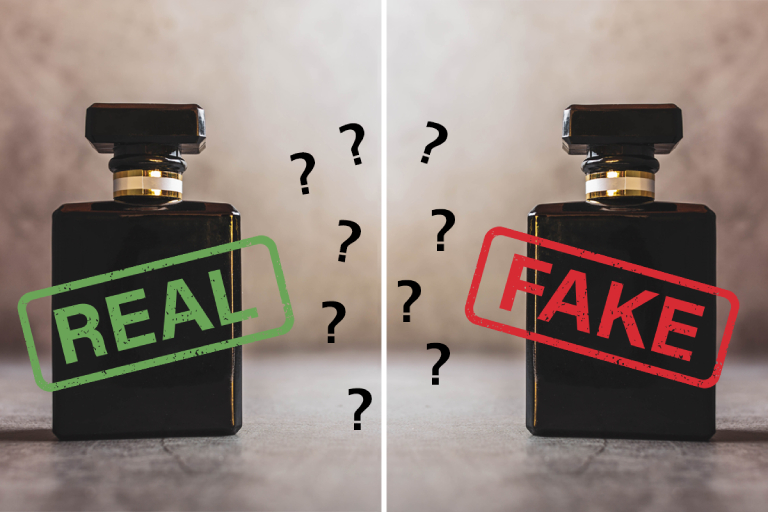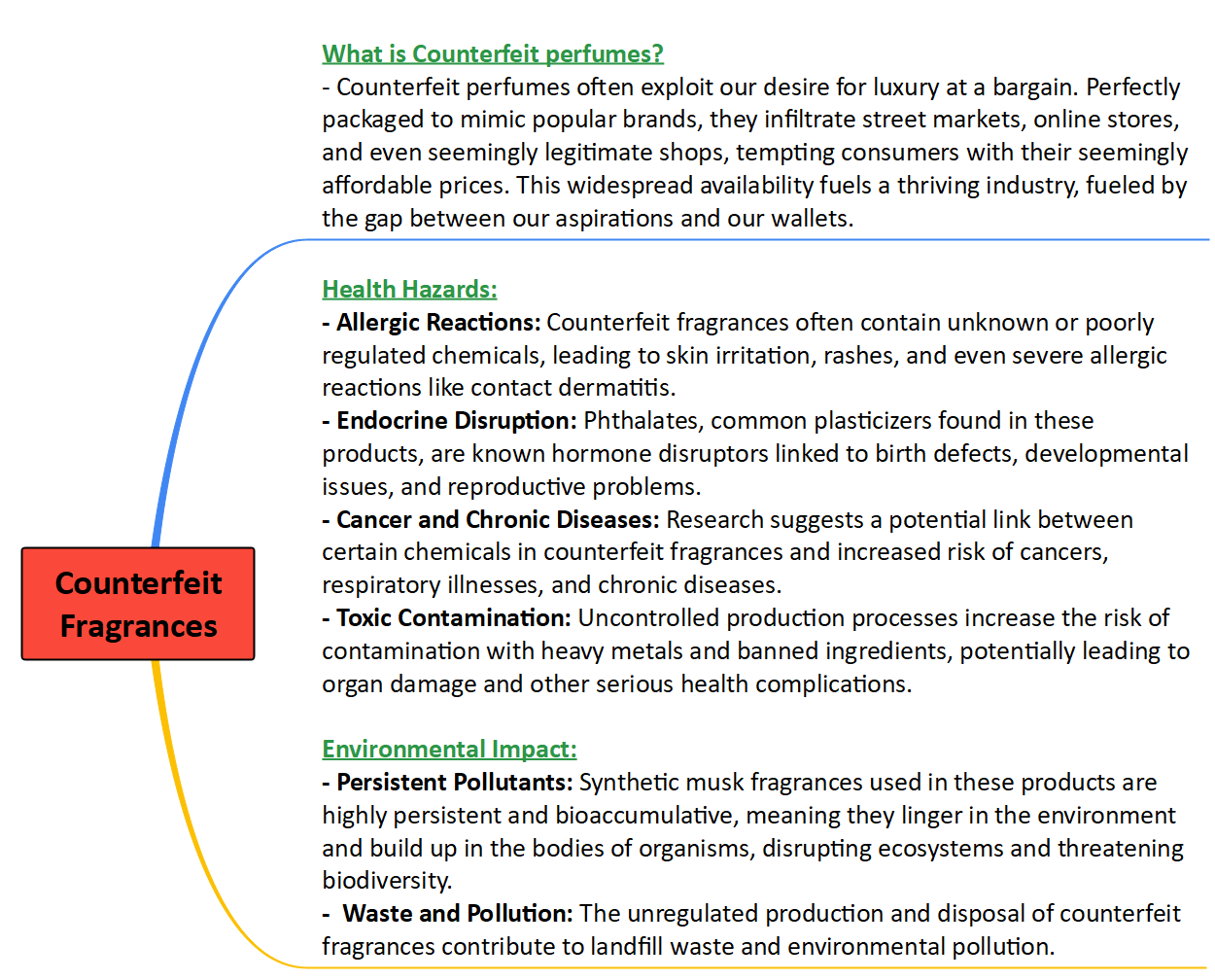Description

Copyright infringement not intended
Picture Courtesy: veritech.in
Context: In a crucial development towards public safety, BAN Toxics, a chemical and waste management advocacy group, issued a warning against an alarming rise in the sale of imitation and counterfeit perfumes and fragrances across the Philippines.
Details
- BAN Toxics conducted market surveillance, revealing a significant increase in the sale of imitation and counterfeit perfumes in the Philippines. The organization expressed concern that consumers may unknowingly purchase these products, underestimating the potential health risks.
Health Risks Associated with Counterfeit Fragrances
- Recent studies have shown that counterfeit fragrances can contain harmful chemicals leading to various health problems.
- Health issues range from allergic contact dermatitis to more severe risks such as cancers and chronic diseases.
- The lack of transparency in labelling fragrance ingredients poses a higher risk to consumers, making accurate quality supervision challenging.
Transparency Issues in Labeling
- A 2022 report emphasized the lack of transparency in labelling fragrance ingredients, hindering diagnostic and preventive measures.
- Fragrance components, found in various consumer goods, are challenging to avoid due to their ubiquity and vague labeling practices.
- The report highlighted the need for more accurate and environmentally friendly methods in quality supervision.

Concerning Ingredients in Fragrances
- The Environmental Working Group (EWG) Skin Deep Cosmetic Database revealed that the term "fragrance" on cosmetic labels can hide a complex mixture of up to 3,163 different chemicals.
- Hazardous chemicals such as phthalates, octoxynols, and nonoxynol are often present in counterfeit perfumes and can have adverse health effects, including hormone disruption and birth defects.
Environmental Impact
- Synthetic musk fragrances used in perfumes can be highly toxic to the environment, persisting in aquatic ecosystems and causing bioaccumulation.
- The Concerns about the environmental impact of counterfeit perfumes and the potential long-term consequences of their use.
Advocacy and Action by BAN Toxics
- BAN Toxics is actively involved in identifying and reporting the sale of unregistered and unnotified personal care products, both in physical and online marketplaces.
- BAN Toxics is calling for public health advisories and stringent measures to safeguard consumers from the dangers of counterfeit cosmetics.

|
The Call to Action
●Consumer Awareness: Educating consumers about the dangers of counterfeit perfumes is crucial. Promoting responsible purchasing habits, encouraging the use of reputable brands and authorized retailers, and highlighting the importance of checking ingredient lists are all essential steps.
●Stricter Regulations: Governments and regulatory bodies need to implement stricter laws and regulations to crack down on the production and sale of counterfeit fragrances. This includes enhanced surveillance, stricter quality control measures, and harsher penalties for offenders.
●Industry Responsibility: Ethical and sustainable practices within the fragrance industry are essential. Brands need to prioritize transparency, ensuring the safety of their products and minimizing their environmental footprint.
|
Conclusion
- The counterfeit perfume market poses a significant threat to both public health and the environment. Addressing this issue requires a multi-pronged approach involving stricter regulations, increased consumer awareness, and continued enforcement measures. By understanding the risks involved and taking collective action, we can work towards a safer and more sustainable future for fragrance enthusiasts in the Philippines.
|
PRACTICE QUESTION
Q. What are phthalates primarily used for?
A) Food coloring
B) Plasticizers in plastics
C) Antioxidants in skincare products
D) Preservatives in pharmaceuticals
Answer: B
Explanation: Phthalates are commonly used as plasticizers in plastics to improve flexibility and durability.
|

















